Halftone is a technique to change the tone of an area by using a pattern of dots of varying sizes and with varying spacing. For example, it allows you to print various shades of gray using only white and black.
Normally, you won't be able to actually SEE the dots—as in: tell them apart—because they'll be very small.
Manga: Yuru Yuri ゆるゆり (Volume 1)
Pattern
When the amiten 網点 pattern is large enough to be discernible, it looks like a "polka dots pattern," mizu-tama moyou 水玉模様, like the background of this panel:
Manga: Bokura wa Minna Kawai-sou 僕らはみんな河合荘 (Chapter 2)
- ji, jii
じ、じー
*stare* *stare* - ho'
ほっ
Oh. - peta' peta' peta, peta...
ぺたっぺたっぺた ぺた・・・
*sound of steps*
And gradients would look like this:
Manga: Gabriel DropOut, ガヴリールドロップアウト (Chapter 5)
- Context: Vignette ヴィネット just wants to get with the program.
- maa ii wa...
まぁいいわ・・・
Whatever... (never mind that.) - hajimemashou
始めましょう
Let's start. (already.)
When the halftone is less than 50% black, you have black dots on a white background. When it's around 50% black, it turns into a diagonal grid. Above 50% black, the situation inverts: most of the pattern will be black, so there will be white dots on a black background.
The 100% black halftone is also called beta ベタ, as is coloring something with solid black ink.
- mitsu-do
密度
Density. - nou-do
濃度
Concentration. - moare
モアレ
Moiré [pattern]. The term for when two patterns made out of gaps overlap each other.
Besides percentages, there's also a matter of size.
The amiten intended for simply making things gray is supposed to be too small to be discernible at normal viewing distance. However, sometimes authors deliberately use a pattern large enough to have a discernible texture. For example:
Manga: Grand Blue, ぐらんぶる (Chapter 1, ディープブルー)
- In this panel, literally everything that's gray uses halftone.
- The halftone pattern in the gray clothes of the characters in the background becomes indiscernible at lower resolutions (i.e. DPI) because it's too small.
- The halftone pattern on the hair and back of the character in the foreground, however, is large enough to make a discernible texture even at lower resolutions.
Technically speaking, the difference between these two is the number of "Lines Per Inch," sensuu 線数.
Halftones with fewer LPI are bigger and more discernible, while those with more LPI are smaller and less discernible.
Ink printers automatically use the halftone technique in order to print gray. Printers don't have gray ink. They have black ink, and magenta, cyan and yellow. All colors that printers print are composed by overlapping patterns of very tiny dots at different concentrations.
Source: Slippens, Pbroks13 on Wikimedia.org (Public Domain)
If a manga author colored something gray, the printer would automatically print it using a minuscule halftone pattern of black dots. However, that's not what normally happens.
Instead, what happens is that the manga author doesn't color anything gray. The author doesn't use gray ink, either, or gray paint. The author uses screentones.
A screentone is a semitransparent paper with some texture already printed on it. You cut this paper in the shape you want, like the shape of the area in a character's hair that you want to make gray, and then you glue the screentone on the drawing, making it look gray.
Anime: Bakuman. バクマン。 (Episode 4)
- toon
トーン
Tone. - sukuriin-toon
スクリーントーン
Screen tone.
The drawing already has the halftone pattern BEFORE being printed, because it's printed on the screentone pasted on the drawing. Thus, the amiten 網点 you see in manga isn't he halftone from the printer, it's the halftone the author chose for that drawing.
Furthermore, nowadays some artists don't even draw on paper, pasting screentones. They draw digitally, drag-and-dropping screentones digitally. Including the halftone patterns.
See Also
For reference, some things similar, but different to amiten 網点.
Manga: Houshin Engi 封神演義 (Chapter 1, 封神の書)
- suname
砂目
"Sand grain." Also known as noise, stochastic screening, or FM halftone. A different but also extremely common pattern used to render gradients in manga.- By the way, amiten 網点 would be an AM halftone.
Manga: Bokura wa Minna Kawai-sou 僕らはみんな河合荘 (Chapter 2)
- kakeami
カケアミ
A hatching pattern use to shade things. Traditionally, the lines of this hatching pattern were drawn by hand, but nowadays the pattern is available in screentones and software.
Anime: Bakuman. バクマン。 (Episode 23)
- tenbyou
点描
Stippling. A shading technique that uses only dots. Not very common in manga.
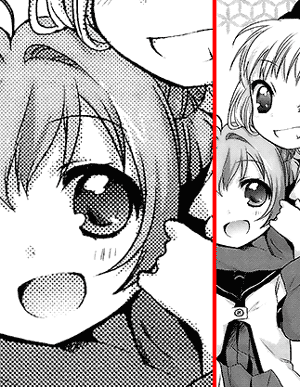

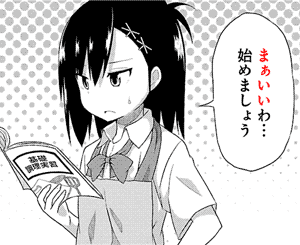
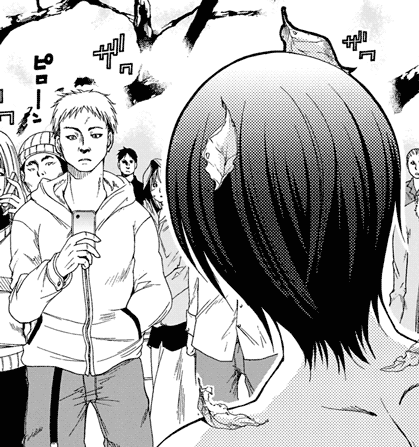
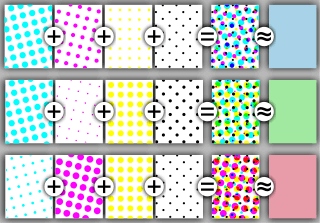
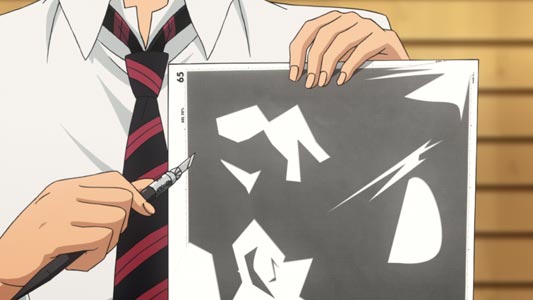
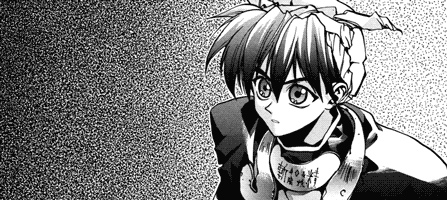
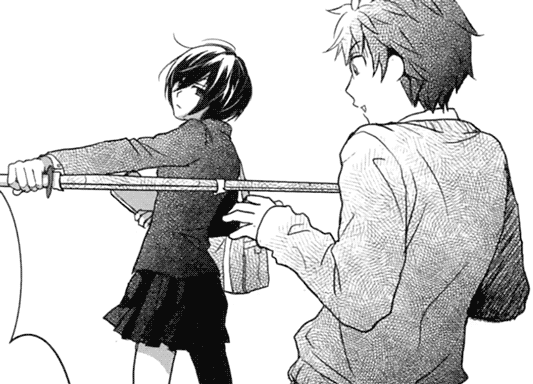
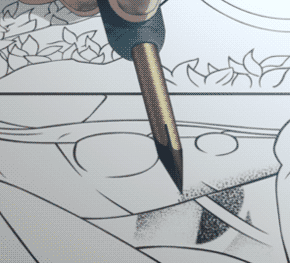
No comments: